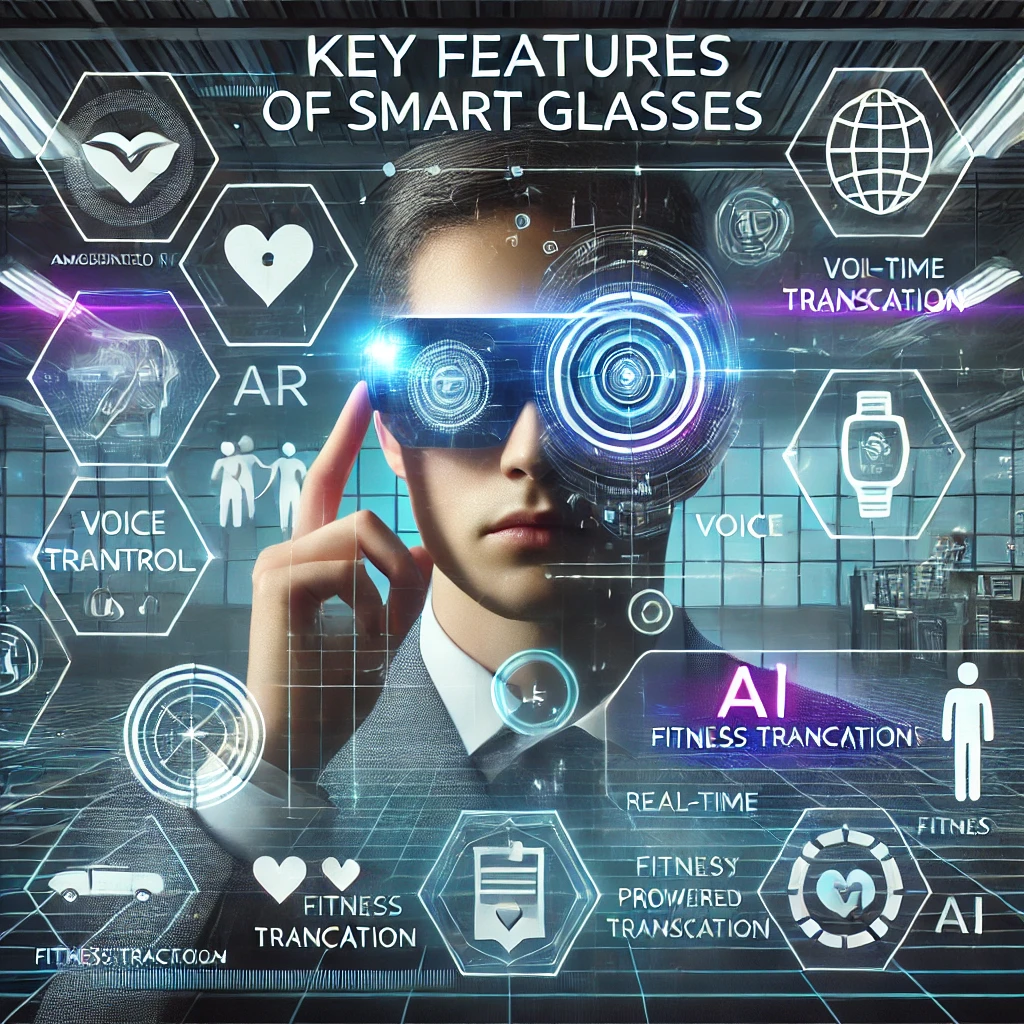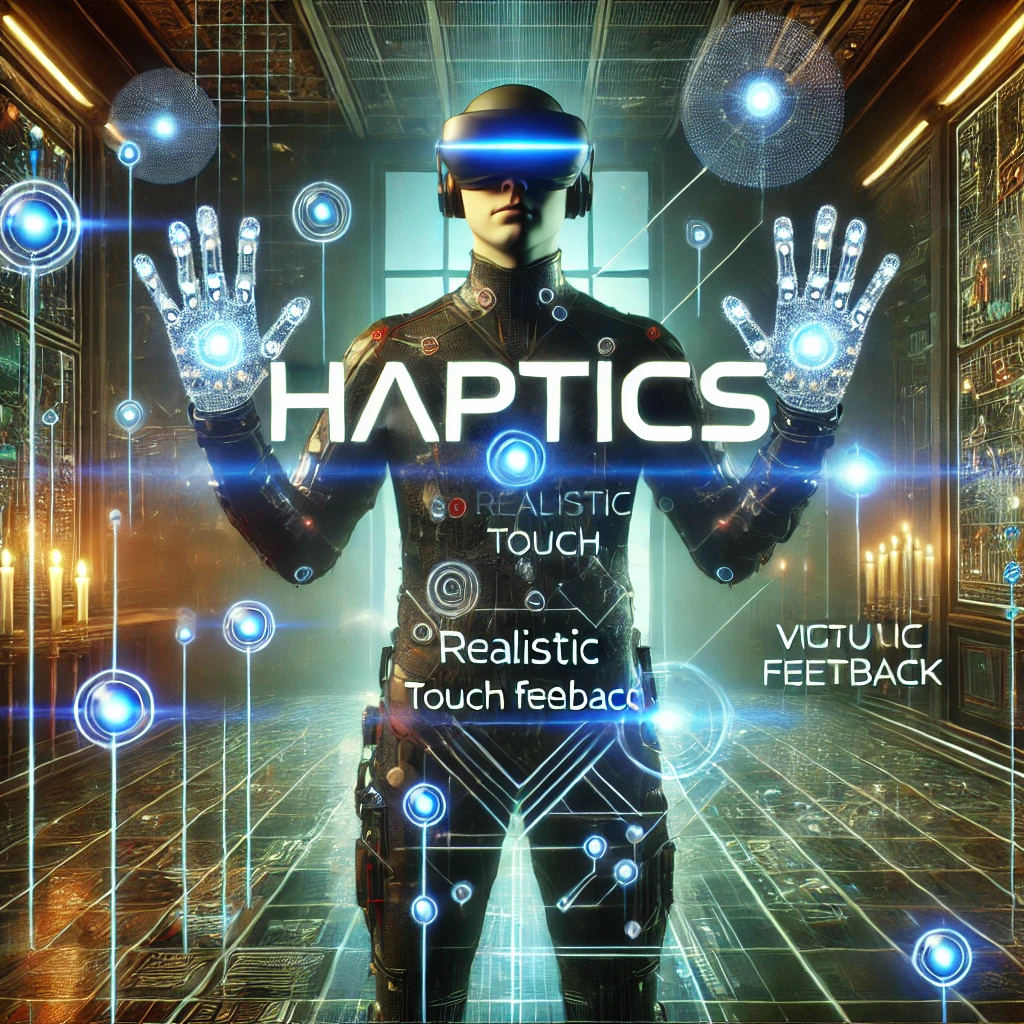Smart Glasses: The Future of Augmented Reality and Wearable Technology

Introduction
Smart glasses are one of the most exciting innovations in wearable technology, merging the power of augmented reality (AR), artificial intelligence (AI), and hands-free connectivity into a single device. These high-tech glasses enhance everyday experiences by overlaying digital information onto the real world, allowing users to interact with data, receive notifications, navigate seamlessly, and even capture moments hands-free.
From tech giants like Google, Apple, and Meta to emerging startups, the race to develop the perfect pair of smart glasses is heating up. Industries such as healthcare, education, gaming, and business are rapidly adopting this technology for improved efficiency and immersive experiences. While smart glass promise a futuristic lifestyle, they also face challenges such as privacy concerns, affordability, and battery limitations.
This article explores the evolution, features, applications, benefits, challenges, and future of smart glass in the ever-evolving world of technology.
The Evolution of Smart Glasses
The journey of smart glasses began with early concepts in science fiction, but in the 21st century, they became a reality. Here’s a brief timeline of their development:
- 2012: Google introduced Google Glass, one of the first mainstream AR-powered smart glasses, but it struggled with privacy concerns and commercial viability.
- 2016: Snapchat (now Snap Inc.) launched Spectacles, focusing on hands-free video recording for social media.
- 2019: Microsoft’s HoloLens evolved with advanced AR applications for businesses and developers.
- 2021: Meta (formerly Facebook) collaborated with Ray-Ban to release Ray-Ban Stories, smart glass with built-in cameras and audio.
- 2023: Apple announced its Vision Pro headset, indicating a strong interest in mixed-reality wearable devices.
Key Features of Smart Glasses

Modern smart glasses come equipped with various advanced features, including:
1. Augmented Reality (AR) Integration
- Overlays digital information onto the real world, enhancing navigation, gaming, and remote collaboration.
2. Voice Control and AI Assistance
- Integrated AI assistants like Siri, Google Assistant, or Alexa provide hands-free interactions.
3. Real-Time Information and Notifications
- Displays messages, reminders, and GPS directions in the user’s field of view.
4. Built-In Cameras and Video Recording
- Allows users to capture photos and videos without using their hands.
5. Smart Audio and Bone Conduction Technology
- Built-in speakers or bone conduction technology provide audio without blocking external sounds.
6. Gesture and Eye Tracking
- Advanced models use eye-tracking technology for seamless navigation and gesture controls.
7. Connectivity with IoT and Smart Devices
- Syncs with smartphones, smart homes, and other connected devices for a more integrated experience.
Applications of Smart Glasses Across Industries

1. Healthcare
- Surgeons use AR-powered smart glasses for real-time guidance during surgeries.
- Remote medical consultations and hands-free access to patient data improve healthcare efficiency.
2. Education and Training
- AR-based smart glasses provide interactive learning experiences.
- Training programs use smart glass for hands-on learning in fields like engineering, medicine, and aviation.
3. Retail and Shopping
- Smart glasses offer virtual try-on experiences for fashion and accessories.
- Retail employees use AR to check inventory and assist customers.
4. Gaming and Entertainment
- Augmented reality gaming experiences, similar to Pokémon GO but more immersive.
- Virtual concerts, interactive movies, and AR-enhanced social media applications.
5. Manufacturing and Maintenance
- Workers access real-time schematics and instructions, reducing errors and increasing efficiency.
- Remote assistance enables experts to guide technicians through complex repairs.
6. Military and Defense
- Tactical smart glasses provide real-time battlefield data and night vision capabilities.
- AR-assisted training improves combat simulations and strategy planning.
7. Business and Productivity
- Hands-free video conferencing enhances remote collaboration.
- Smart glass improve workflow efficiency by reducing screen dependency.
Benefits of Smart Glasses
- Enhanced Productivity: Hands-free operations improve workflow in various professions.
- Immersive Experience: AR overlays bring a new dimension to gaming, entertainment, and work.
- Accessibility: Assists individuals with disabilities by providing real-time text, navigation, and voice control.
- Safety and Security: Hands-free navigation and real-time hazard detection enhance safety.
- Seamless Connectivity: Integration with IoT, smartphones, and cloud computing makes daily tasks more efficient.
Challenges and Concerns

1. Privacy Issues
- Built-in cameras raise concerns about unauthorized recording and data collection.
- Regulations are needed to address ethical concerns regarding personal privacy.
2. Battery Life and Performance
- AR features consume significant power, limiting long-term usability.
- Advances in battery technology and energy-efficient components are essential for improvement.
3. Affordability
- High-end smart glasses are expensive, making them less accessible to the average consumer.
- Mass adoption requires cost reductions and improved affordability.
4. Social Acceptance
- Wearing smart glasses in public may still feel unusual or intrusive.
- Overcoming societal resistance is crucial for widespread adoption.
5. Limited Field of View
- Many AR smart glass have a restricted field of view, affecting immersive experiences.
- Future models must improve display technology for better visuals.
The Future of Smart Glasses

The future of smart glasses looks promising with continuous advancements in AI, AR, and wearable technology. Here are some trends shaping the next generation of smart glasses:
1. AI-Enhanced Smart Glasses
- Improved AI capabilities will enable more intuitive and personalized interactions.
2. Lighter, More Stylish Designs
- Tech companies are working on making smart glass sleeker and more fashionable.
3. Advanced Display Technology
- OLED and micro-LED displays will enhance visual clarity and efficiency.
4. Integration with Metaverse and Mixed Reality
- Smart glasses will play a key role in the development of the metaverse, offering immersive digital experiences.
5. 5G and Edge Computing
- Faster connectivity will enable real-time processing and cloud-based AR applications.
6. Brain-Computer Interfaces (BCIs)
- Future smart glasses may integrate BCIs for direct mind-controlled interactions.
Conclusion
Smart glasses are at the forefront of wearable technology, revolutionizing how we interact with the digital world. With applications spanning multiple industries, they enhance productivity, improve accessibility, and provide immersive experiences. However, challenges like privacy concerns, affordability, and battery life must be addressed for widespread adoption.
As technology advances, smart glasses will become an essential part of our daily lives, bridging the gap between the physical and digital worlds. The combination of AR, AI, and improved connectivity will unlock limitless possibilities, making smart glasses a key player in the future of technology.







